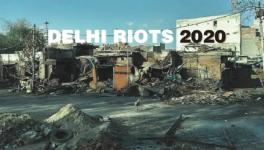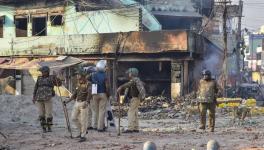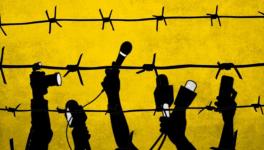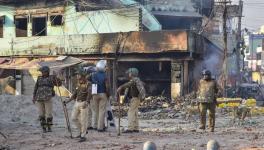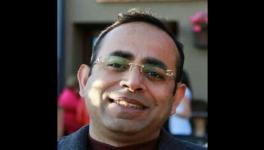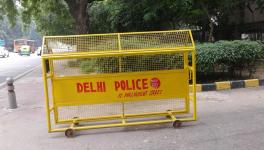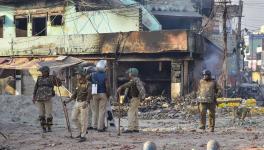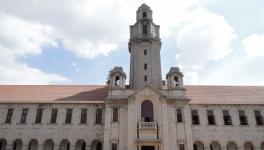Delhi Riots: Fresh Videos Surface which Show Unprecedented Police Brutality and Violation of Guidelines
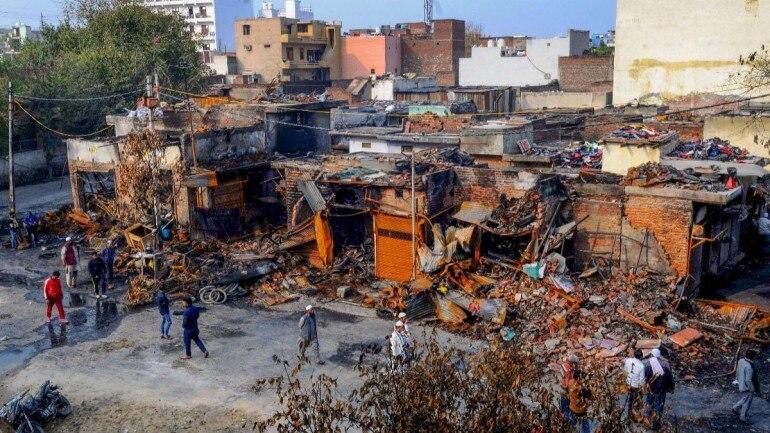
Representational image.
New Delhi: In the aftermath of the worst sectarian violence that Delhi witnessed in decades, the “partisan” role of the Delhi Police has come under question once again with a slew of “selective arrests” and a “targeted” crackdown, allegedly on the community which bore the brunt of the deadly communal carnage in North-East Delhi that spanned four days. The allegation of police bias was bolstered after the Delhi Police refused to divulge details of First Information Reports (FIRs) and the names that figured in the FIRs, with rights activists demanding that the police comes clean.
There are multiple instances of “arbitrary” arrests with random Muslim men being picked up by personnel from different police stations in the north-east region of the city. Weeks after the violence that ravaged several neighbourhoods of the region between February 23 and February 26, the city police has lodged over 702 FIRs and has either detained or arrested 2,387 people till Sunday in connection with the riots. So far, the violence has claimed 53 lives and left hundreds injured, aside from properties worth crores of rupees either turned to ash or destroyed beyond repair.
The role of the police force is being repeatedly questioned: Firstly, for its handling of the volatile situation, then for allegedly being complicit in the violence and now for cracking down on the suspects who allegedly participated in or orchestrated targeted attacks.
So far, only few names — suspended Aam Aadmi Party (AAP) councillor Tahir Hussain, the gun-wielding man Shahrukh Pathan, who was caught on camera aiming a pistol at a police officer, Mohammed Shahnawaz, a resident of Shiv Vihar who has been arrested for the murder of a sweet shop staff member Dilbar Singh Negi and a suspected Popular Front of India (PFI) member — have surfaced or been publicised in the media as if they were the ones inciting communal passion and setting several neighbourhoods in the area on fire.
Residents and victims of riot-affected Jaffrabad, Kardampuri, Kabir Nagar, Bhagirathi Vihar, Mustafabad and Shiv Vihar alleged that four-five men (belonging to a particular community) have been picked up by the police. Many of them alleged that the police barge into houses, ask for names and pick them up. The families do not know the whereabouts of many of those who have been picked up. They are making visits to concerned police stations and the Karkardooma court to know more.
As victims of the violence try to pick up the pieces and are struggling to return to normal lives, the number of missing sons and husbands are rising. Several victims alleged that those who have been picked up in the name of interrogation are being booked under serious charges. They claim that they are being sent to jails while their family members are unaware of their arrest.
The Delhi Police is now apparently trying to find out a foreign angle in the entire incident, but appears to not be ready to probe the role of BJP leader Kapil Sharma and others, who were caught on camera trying to incite violence. It also does not appear too inclined to investigate the role of its own officials who either acted as mute spectators or were complicit in the violence.
Two Special Investigation Teams (SITs) of the Crime Branch, each led by a Deputy Commissioner of Police (DCP) — Joy Tirkey and Rajesh Deo — are probing the violence. According to sources, the teams are collecting and scrutinising hundreds of clips of video footage of the clashes. They are also said to be gathering mobile call records and data records to identify those involved in the violence. They have also been tasked with ascertaining the role of “outsiders” in the riots.
The aforementioned officers also probed recent incidents of violence at Jamia Millia Islamia (where police entered the campus and allegedly beat students indiscriminately) and Jawaharlal Nehru University (where an armed gang allegedly associated with ABVP entered the campus and beat students and teachers). The Delhi Police has faced severe criticism for its handling of the two incidents and the resulting probes that followed. The manner in which both officers defended the police and showed their bias towards the Central Government has led many to deeply mistrust the two SITs.
A couple of fresh videos purportedly show “complicity and involvement of Delhi Police personnel” in setting the Farooquiya mosque in Mustafabad on fire during the anti-Muslim riots in North-East Delhi last month.
Eyewitness accounts coupled with the two clips brazenly expose the “communal nature of the police”, prompting a need for “structural reform of the necessary evil” with a focus on handling communal situation.
According to the caretaker and muezzin of the mosque, the cops entered the Farooquiya Masjid at Brijpuri Puliya (culvert) near Mustafabad and thrashed worshippers before setting it on fire on February 24. In the video, the cops also allegedly desecrated the madrassa adjacent to the mosque.
The video clips, in possession of NewsClick, were recorded in the morning of February 25, show five cops entering the mosque premises from its back door which is attached to the madrassa building where CCTV cameras are installed. After four minutes, smoke starts blowing out of the window and policemen leave the premises from the mosque’s backdoor.
Eyewitness claimed that the police realized that their acts were recorded in CCTV cameras, so they returned the next day. “They returned on February 25 and broke cameras installed outside the mosque. They did not stop there. The cops also looted cash and partially damaged computer systems. The videos of police brutalities were captured by locals,” they claimed.
Experts claim the Delhi Police failed on several fronts — prompt containment, prevention, neutrality, protection of religious places and confidence-building.
“There appeared to be complete violation of the Home Ministry’s guidelines on communal harmony. The Delhi Police failed to prove it’s a professional police force. By their actions they did not show that they were resolved to prevent or contain the violence. It was shocking that violence continued for three days in the national capital, which is the seat of the country’s governance. I cannot hesitate in saying that it was an organised attack against a particular community and that it was supported by the police,” said a former Commissioner of the city police.
The Delhi Police guidelines say: “Whenever any communal incidents are apprehended or occur, prompt and immediate preventive/enforcement action may be taken, including imposition of prohibitory orders/curfew as necessary, and strict and neutral enforcement of the same, apprehension/arrest of the potential miscreants/ those indulging in violence, arson etc, registration/institution of cases.”
The violence broke out on February 23 evening following Kapil Mishra’s provocative speech. Section 144 of the CrPC (prohibitory orders) was put in place in some pockets on the night of February 24 only after a day-long violence. A curfew was imposed only on the night of February 25 in four areas of North-East Delhi.
The guidelines say that composite battalions of armed police, which should include members of all communities including SCs/STs, should be set up to maintain communal peace and amity in sensitive areas. However, no effort to follow these advisories was visible. On the contrary, videos appear to show the police idly watching mobs run amok or even participating in the violence.
“It is more important to prevent a communal riot than to contain it. The district administration should anticipate possible developments and prepare a detailed SOP (standard operating procedure) and contingency plans to deal with them so that escalated situation or riots could be pre-empted or prevented. Also, special attention needs to be given to developing mechanisms for intelligence and information-gathering. The intelligence feedback, especially from the ground level, should be effectively made use of,” said Vikram Singh, former Director General of Police, Uttar Pradesh, adding that there appeared to “intelligence failure” or a very “half-hearted” attempt at preventing riots.
Eyewitness and ground reports suggest truckloads of stones, bricks and iron roads were brought from neighbouring Uttar Pradesh and Haryana. Rioters from these states, also armed with firearms, came to the disturbed areas. However, the police failed to seal inter-state borders even after the violence escalated on Monday morning.
Get the latest reports & analysis with people's perspective on Protests, movements & deep analytical videos, discussions of the current affairs in your Telegram app. Subscribe to NewsClick's Telegram channel & get Real-Time updates on stories, as they get published on our website.









